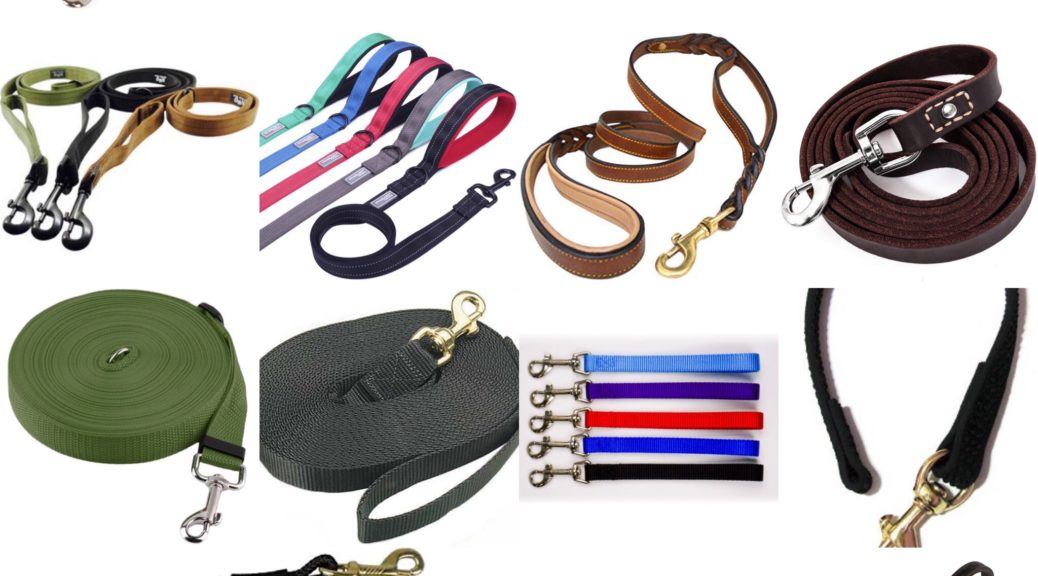You would think that a leash is just a leash. They aren’t – there are different types and different times and reasons for them. I will cover the ones I’ve had experience with and why I would recommend them or not. I do have my favorites, yet also continue to try new products all the time, to find the perfect tool(s) for each situation.
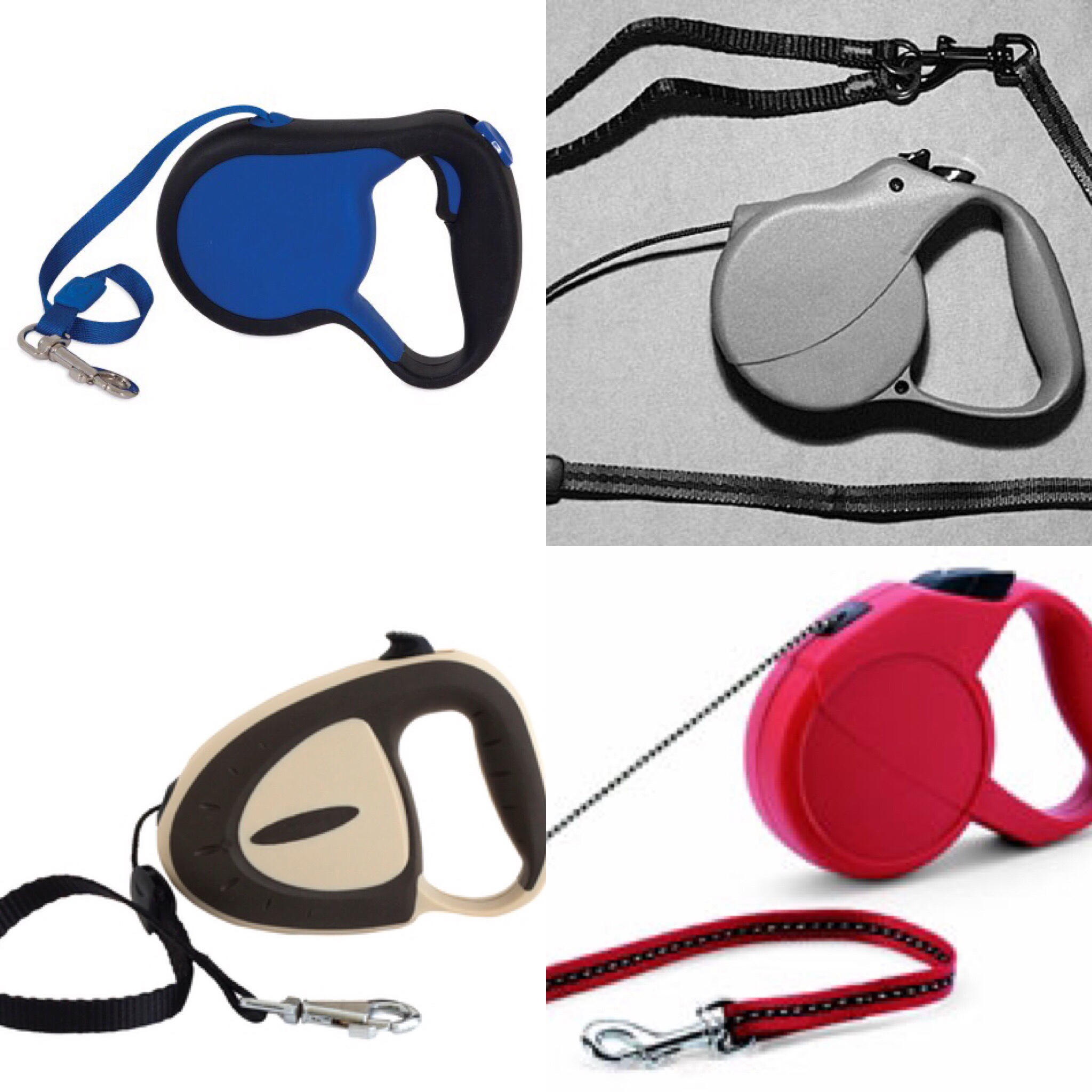
RETRACTABLE LEASHES:
Let’s just start with these guys and get them out of the way, and these are probably the one leash I write the most about. This is one of the most popular leashes on the market. They seem like a really good idea – give your dog 2 feet, or 25! To run and sniff and play on their daily walkies, right? No. These are a bad idea.
They are not safe for you or your dog.
First, if your dog is at full extension, or anything over 3 feet really, you have lost control of your dog and any situation that may arise. Consider this: You’ve just gotten off work, it’s been a long week. You take Mitzi out for her walkies to the park down the street, something you’ve done every day since you adopted her two years ago. Tonight you’re checking your phone while Mitzi is 15 feet away from you sniffing a bush. Suddenly, without any warning, a stray dog who is highly dog aggressive comes out from the other side of that bush, and he triggers onto your Mitzi. 15 Feet is going to take you MUCH longer to get to your dog, by either retracting or running, than that aggressive dog just two feet away.
Dogs also startle at times; retractable leashes give your dog the too-easy opportunity to bolt out into the street, not paying attention to where they’re going. Or run into a yard, or across a driveway too far away from you. There are many situations that can, and do, happen.
On the human side of things…
Most of these leashes are a blend of a long wire and a short bit of actual nylon leash. There are the types that are fully nylon, but that does not improve them much. If you have a dog that is fully extended who gets excited, scared, playful, chased, whatever it might be? Locked or not, it becomes a weapon against you. I have seen people get wrapped up in these and cut bad. I’ve seen people get tied up in them and fall over because the dog took off around them in a circle. I’ve seen the leash snap off at the dog and the recoil whips people in the face, arms or body. I’ve seen people drop the handle and the heavy plastic casing hits their dog. I have seen a lot happen with handlers and these leashes that I just say, do yourself and your dog a favor and just don’t use them.
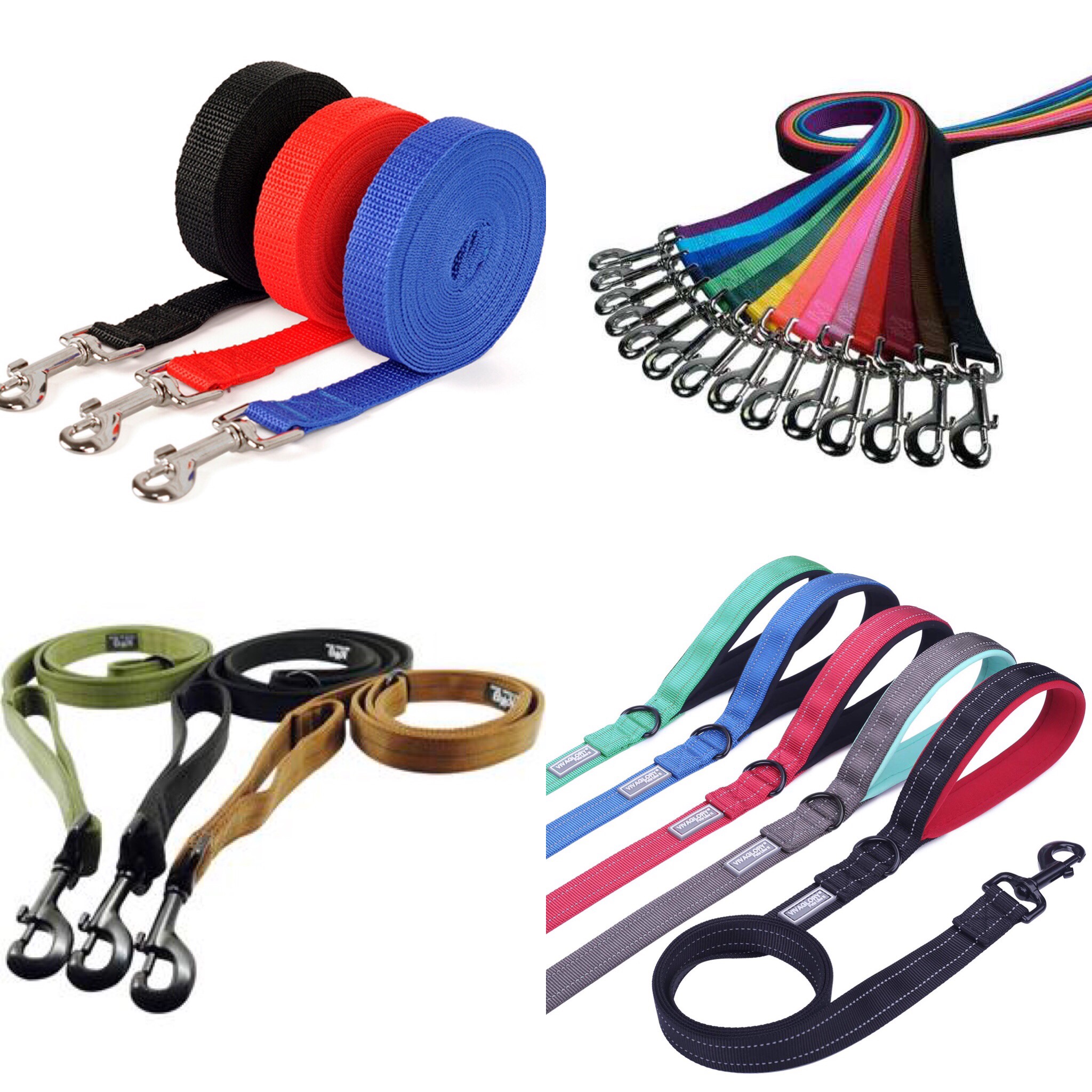
NYLON LEASHES
I like these, they are pretty durable, generally pretty cheap depending on the type that you get (leather handle / double handle) and they come in many varieties of color and patterns. The most important thing about these leashes is that you don’t leave them accessible for your dogs to chew up. I recommend a 4-6ft length medium or heavy grade for comfort and control.
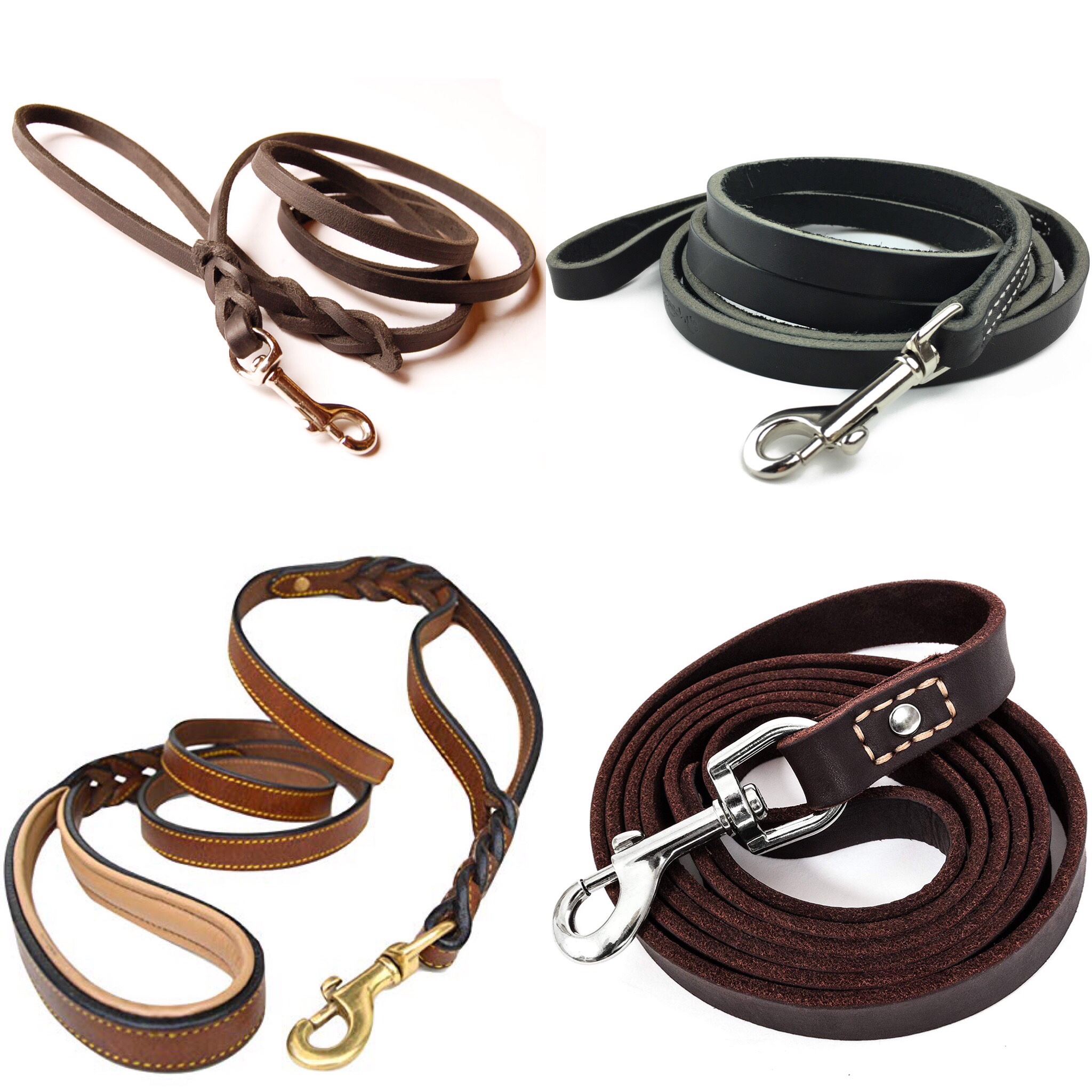
LEATHER LEASHES
I love using leather leashes. These are my favorite type of leash to use. I have one that I’ve been using since 2000. My favorite part about these is they give you a very comfortable grip on your dog. The best thing about them? The more you use them, the softer they become. Still giving you a good grip after 15+ years. I highly recommend using these 6 ft is a good length for training and walking.
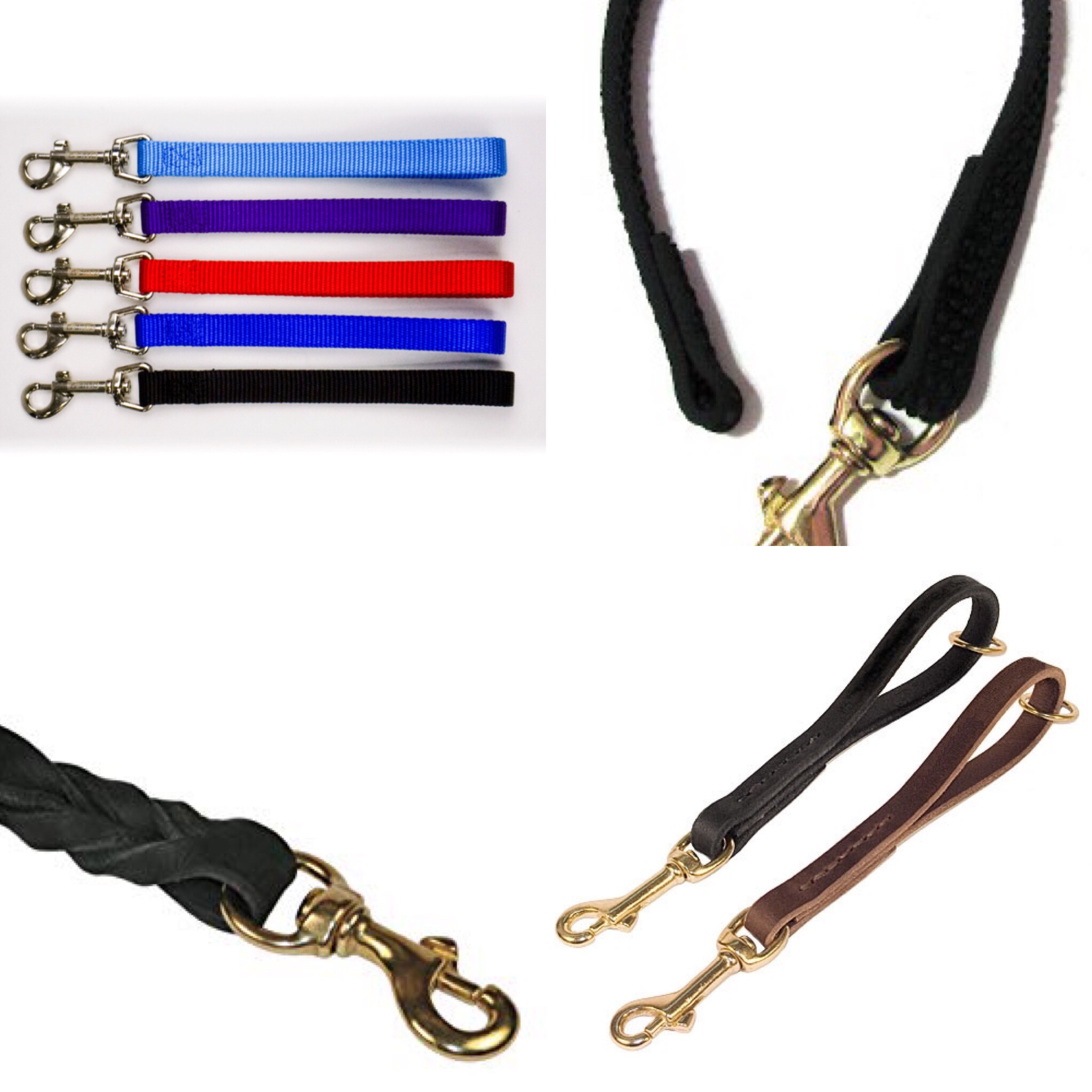
TAB LEASHES
These leashes are fabulous for close-contact training as well as preparation for off-leash training. They are about 1-2 ft long with the handle taking up ½-¾ of the length. This keeps your dog in very close control to you. It doesn’t give them a lot of room to run around or get ahead or behind you. I have used these my entire dog career. I highly recommend getting one of these. The material isn’t AS important as your regular training lead; however, I do like leather or at least a leather-cushioned handle. Be sure the clip is very strong and durable.
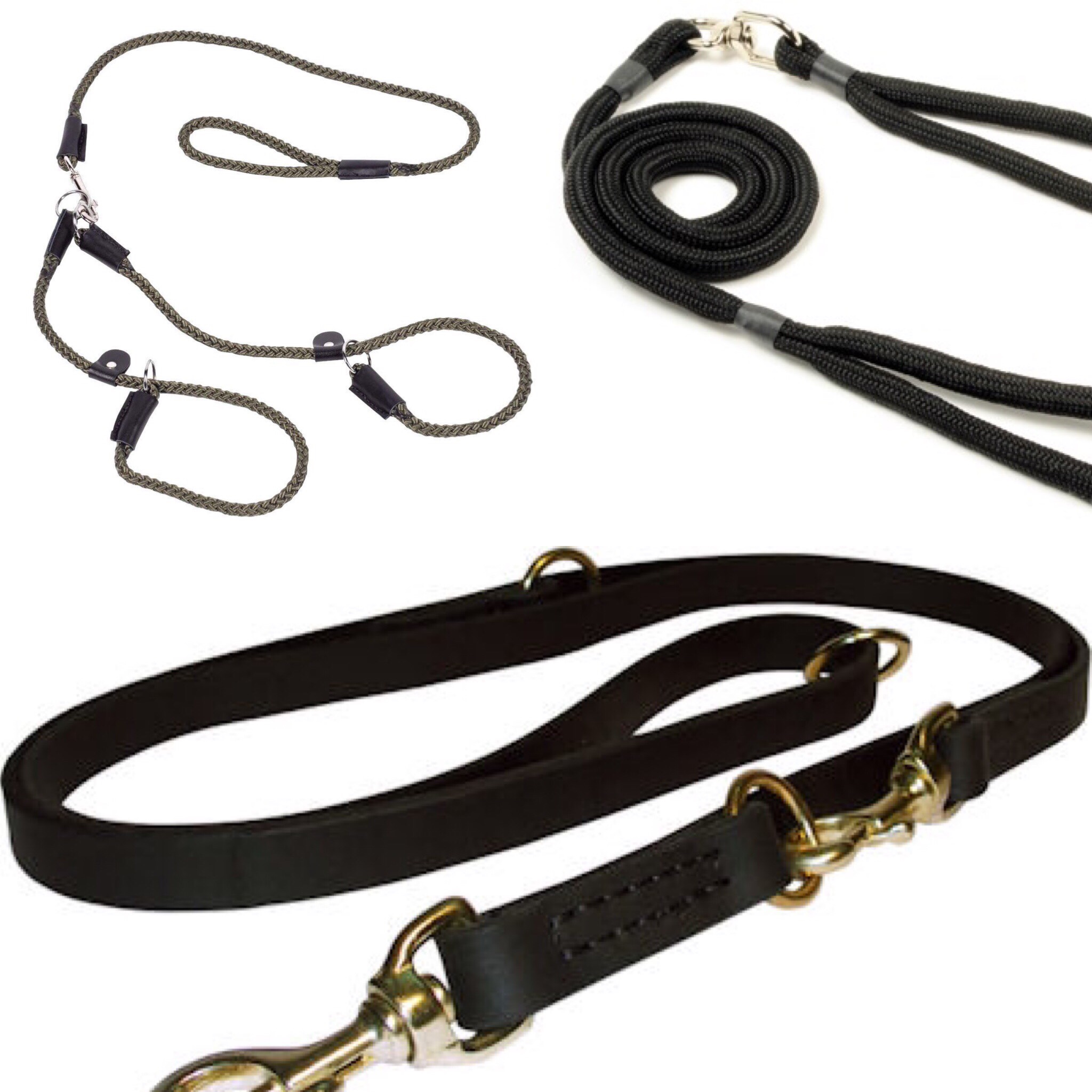
DOUBLE LEAD
These come as an extension that you put on your regular leash, where it has a central ring and two clips on the ends of two short (1 ft) leashes. These are used for people with multiple dogs who want to walk them at the same time together. I am okay with these being used as long as your two dogs do not have the potential to “take out” any sort of reaction on each other, in case anything were to occur on your walk. Sometimes dogs can get over stimulated if they are leash-reactive, and if they have a dog near them they will react at the nearest warm body because they can’t get to the offender. If you have dogs that do not react to dogs, or will not reciprocate if a dog reacts at them, then yes – these are a wonderful tool to have for multiple dog families!
Another type is a single 7 ft lead that has three rings and two clips on it. This is the lead that I use most often and prefer it in leather. Currently I have a heavy cotton type and though it’s comfortable – I prefer my leather. This leash can be used for two dogs to keep them at 7 ft length apart, or you can clip several small extensions on it, you can wrap it around your waist and clip it to you as a hands-free leash, you can give it a handle and use it as a regular leash. There are so many things you can do with this one leash which is why I am a big fan of this one! I definitely recommend having one in your dog supply closet.
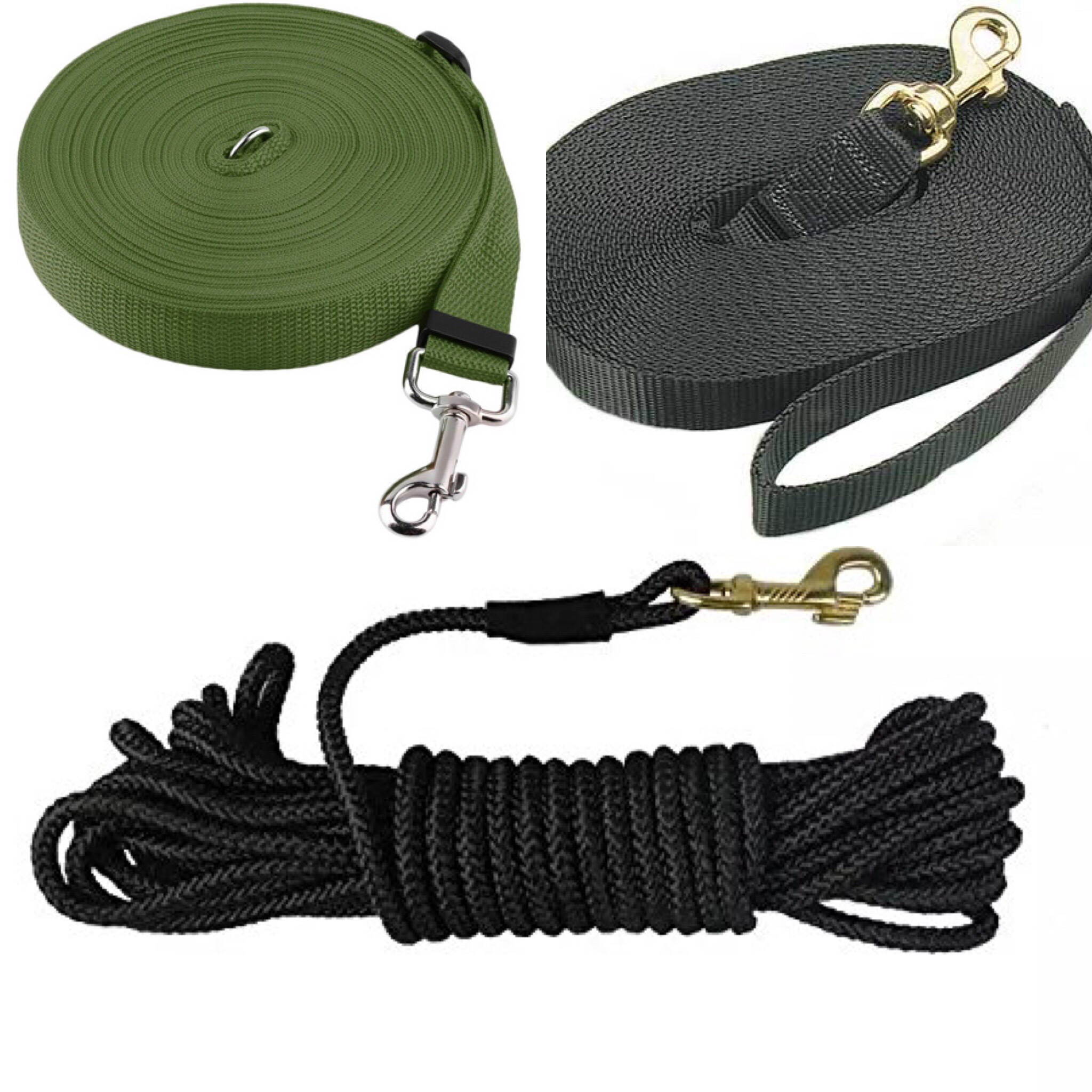
LONG LINE
Long lines are used as training tools. They are 20-50 ft and made of nylon or a thick cotton-type material. All of them come with handle for you and a clip at the other end for the dog – just like a very giant, well, leash. Long lines would not be good for going on your average walks; however, if you’re training your dog in the field they are great. I use these for working on recall as well as working on distance stays. Yes I use them out in the world at parks or in the front yard. Again it is used for training purposes only and that means that I and my dog are both 100% focused on one another and I am staying in control of the situation. Very different from your 25 ft retractable leash.
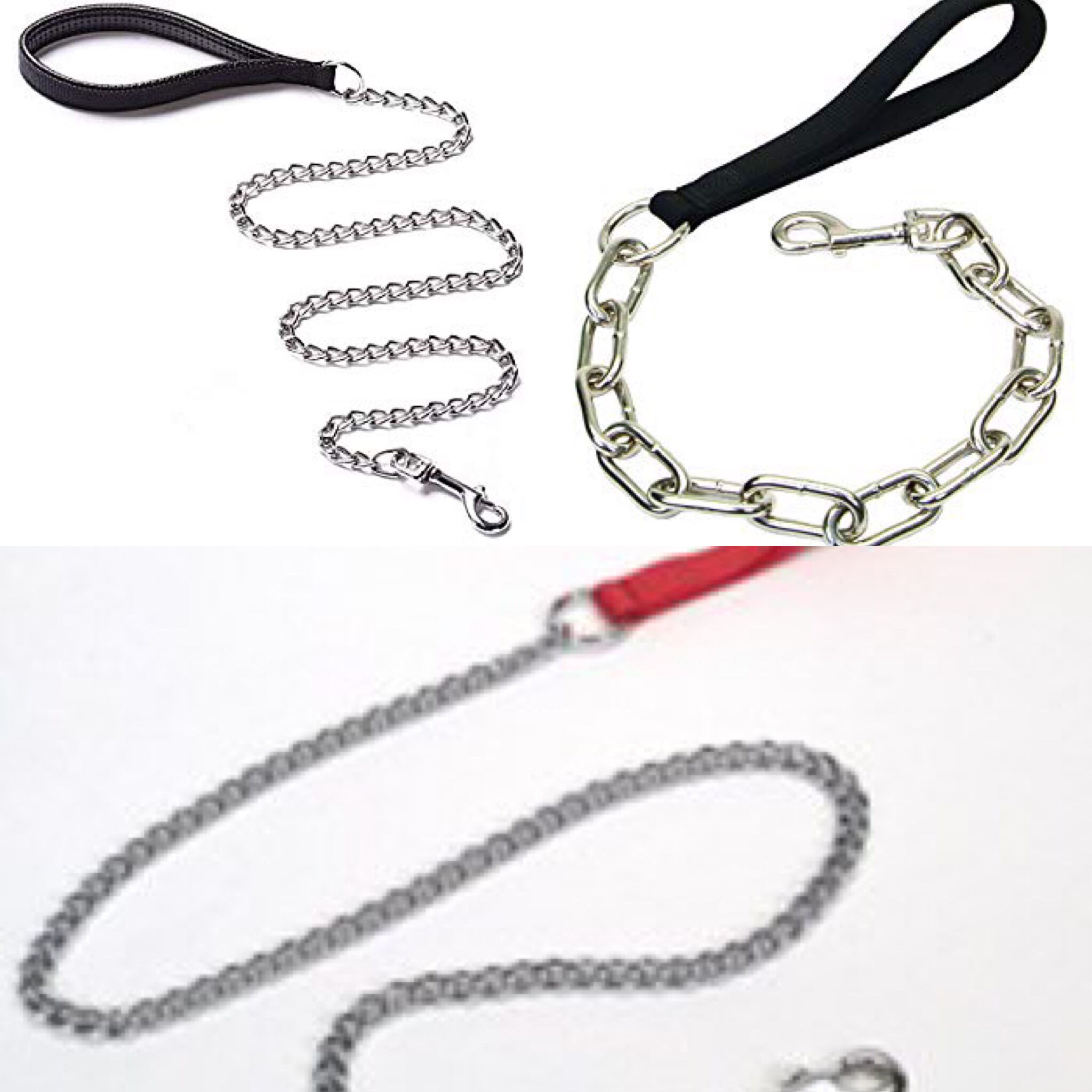
CHAIN LEASH
Chain leashes come in second to retractable leashes for me. Only in extremely rare cases would I ever recommend one of these. They are uncomfortable on your hands, they restrict you to only holding onto the handle which is usually about 8” long, giving your dog 4 ft+ of freedom to do whatever. In the rare cases that I have recommended this type of leash, I have also required the handler buy a comfortable set of leather gloves in order to handle the leash. I don’t recommend this one for any reasons beyond habitual leash-biters / destroyers in which the handlers cannot get them to stop chewing on the leash when they use it – Only after we have exhausted every other option out there including training. (VERY rare! Did I emphasize this enough?)
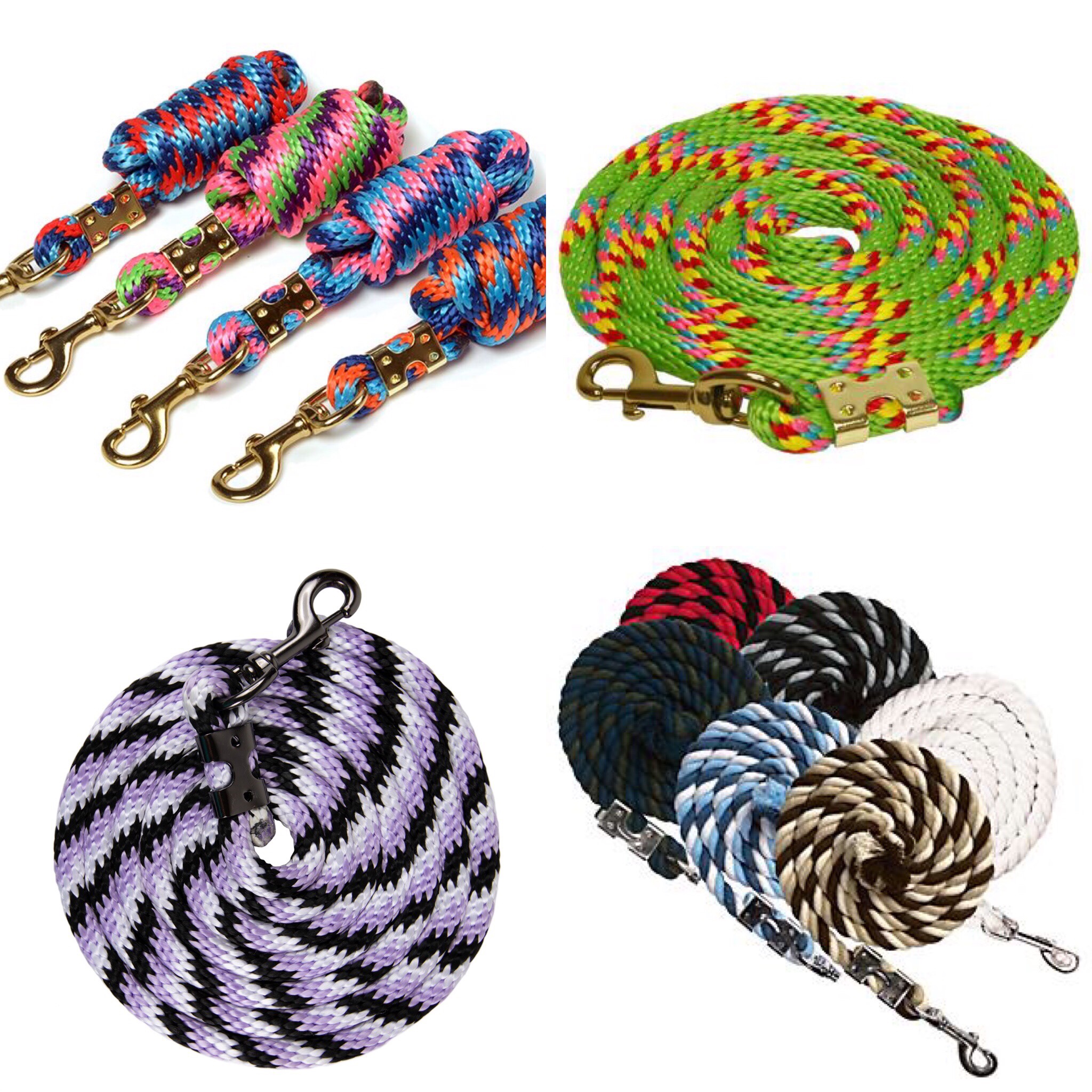
LEAD ROPE
I like lead ropes because I use them with horses. That being said, they do not have a handle attached to them, so they are not as recommended with dogs who might have a habit of bolting or spooking. When I use a lead rope on a dog, it’s because I probably don’t have any other option, usually only used on a dog who is VERY well-behaved with leash manners. They are soft, round, and come in many patterns. OK to get if you want something different or more durable for your dog and comfortable on your hands.
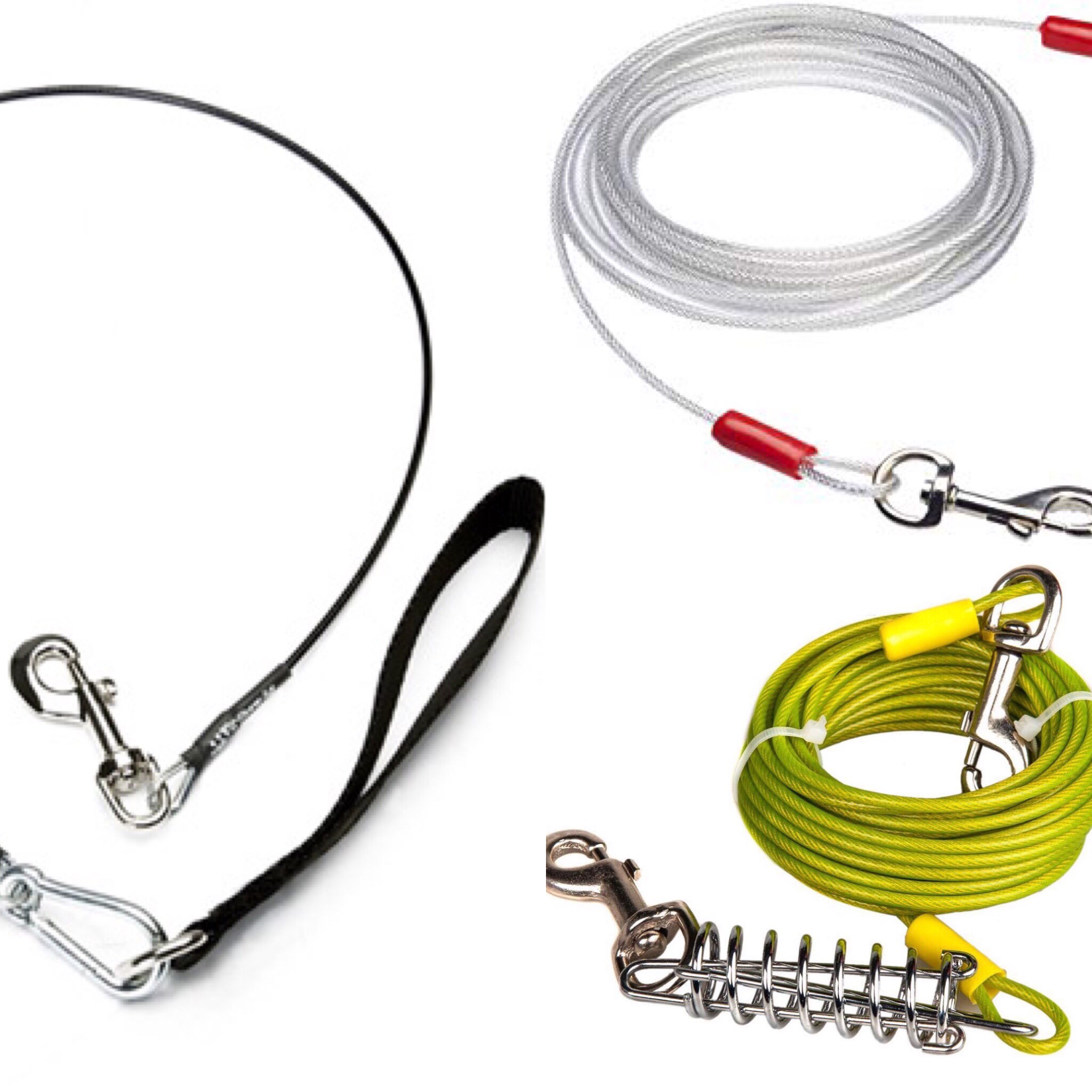
CABLE
Cables are industrial strength wires encased in a hard plastic, with clips on either end. These are for temporary or training purposes. The only times I use cables are the times that I need to tie a dog out for a short period of time where I might need both hands, and/or I don’t want any potential leash-chewing or destroying happening. If I know I have a dog who would chew his way off of the lead in an uncontained area, that’s when I’ll grab a cable to tie them out with. These can be potentially dangerous so I do not recommend ever leaving your dog tied up for any amount of time alone, regardless of what they are on. I would bring a cable out camping if I had a dog who was a wanderer. In most other cases, I would probably rather use a crate for containment.
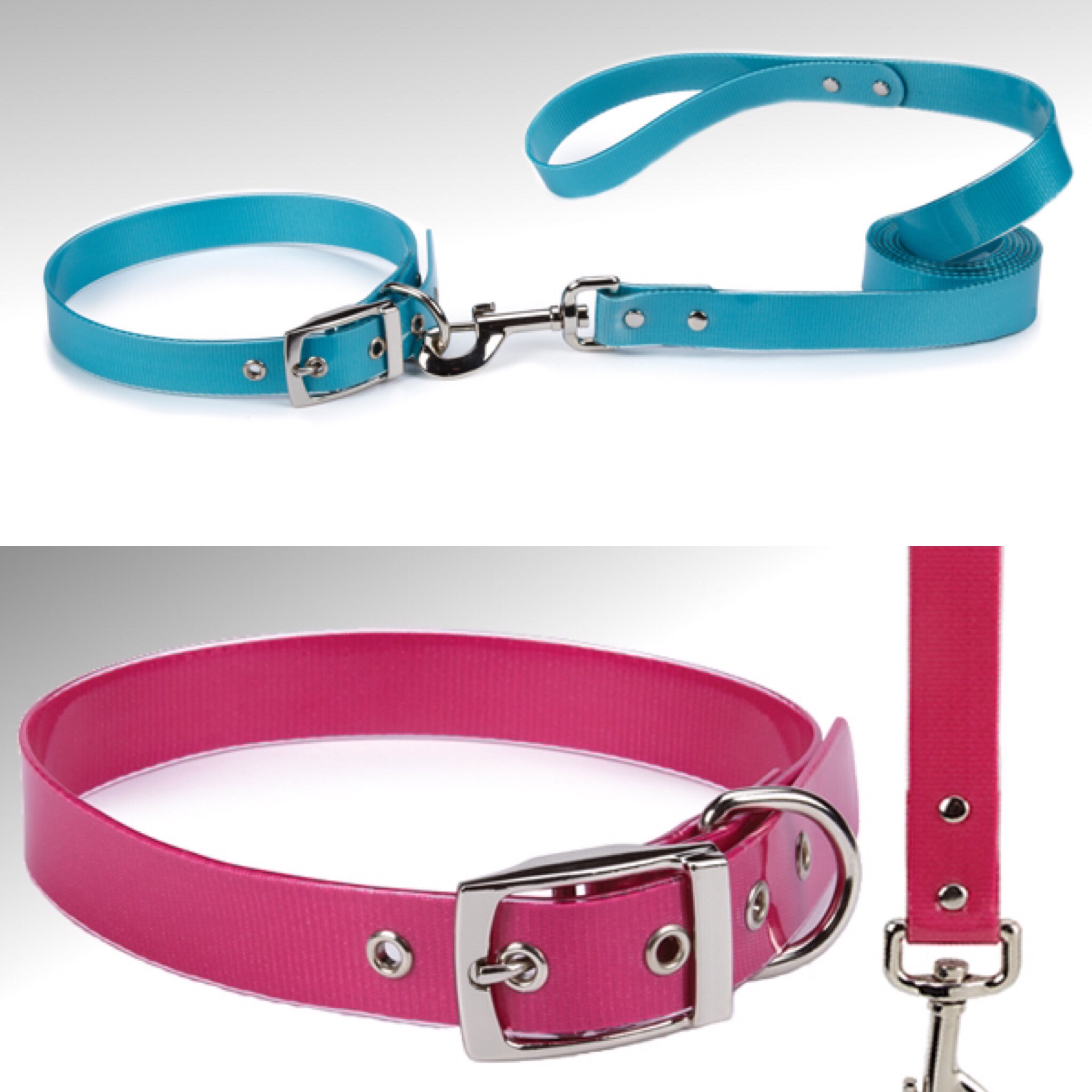
WATERPROOF LEASH
These are best used for when you head to the beach, lake, or river. They don’t absorb the mud and dirt from where you’re visiting, and they can easily be rinsed off, keeping their often bright colors. Best used with waterproof collars too! These are great for bath time if you have a doggo who is not much of a fan – easy to hang onto them, and the water won’t ruin the collar / leash. Very convenient.
LEASH LAW
California does have a leash law stating that your dog must be on a leash at all times in any public place. Off-leash is a concept and goal that many people would like to get their dogs to. Which I understand and highly recommend! But I do not recommend it so that you can go everywhere with your dog off-leash. I recommend Off-Leash training for purposes of having your dog listen if it were to ever get off of the leash accidentally.
There are places that are designated off-leash dog parks and beaches. Dogs are, of course, allowed to be off of the leash, as long as they are social, well-behaved, can listen to direction well, and come when you call them. This is where off-leash training comes in very handy. There are no exemptions from the leash law.
In cases of Service Dogs, Police Dogs, Search and Rescue dogs the law says that they need to be under complete handler control and usually these dogs are still wearing a lead that is short enough to not interfere with the dog’s job or task.
Published by Amy Noble on 8/21/19
Amy is an Animal Behaviorist and Dog Trainer in Monterey, Ca, with over Thirty years of experience and active knowledge working with animals. Amy’s love for every dog, cat, horse, rabbit, human (and more!) that she trains truly shows in her work and dedication.

